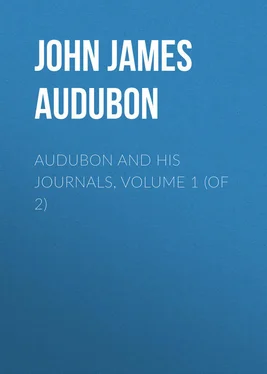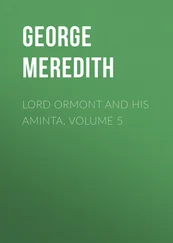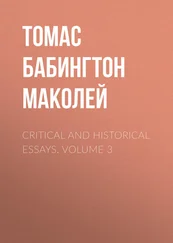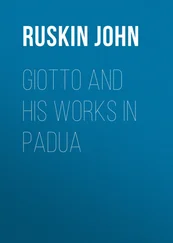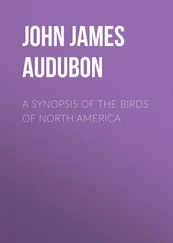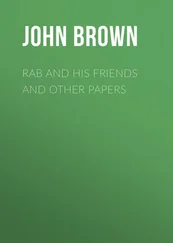John Audubon - Audubon and his Journals, Volume 1 (of 2)
Здесь есть возможность читать онлайн «John Audubon - Audubon and his Journals, Volume 1 (of 2)» — ознакомительный отрывок электронной книги совершенно бесплатно, а после прочтения отрывка купить полную версию. В некоторых случаях можно слушать аудио, скачать через торрент в формате fb2 и присутствует краткое содержание. Жанр: foreign_antique, foreign_prose, на английском языке. Описание произведения, (предисловие) а так же отзывы посетителей доступны на портале библиотеки ЛибКат.
- Название:Audubon and his Journals, Volume 1 (of 2)
- Автор:
- Жанр:
- Год:неизвестен
- ISBN:нет данных
- Рейтинг книги:5 / 5. Голосов: 1
-
Избранное:Добавить в избранное
- Отзывы:
-
Ваша оценка:
- 100
- 1
- 2
- 3
- 4
- 5
Audubon and his Journals, Volume 1 (of 2): краткое содержание, описание и аннотация
Предлагаем к чтению аннотацию, описание, краткое содержание или предисловие (зависит от того, что написал сам автор книги «Audubon and his Journals, Volume 1 (of 2)»). Если вы не нашли необходимую информацию о книге — напишите в комментариях, мы постараемся отыскать её.
Audubon and his Journals, Volume 1 (of 2) — читать онлайн ознакомительный отрывок
Ниже представлен текст книги, разбитый по страницам. Система сохранения места последней прочитанной страницы, позволяет с удобством читать онлайн бесплатно книгу «Audubon and his Journals, Volume 1 (of 2)», без необходимости каждый раз заново искать на чём Вы остановились. Поставьте закладку, и сможете в любой момент перейти на страницу, на которой закончили чтение.
Интервал:
Закладка:
In the late summer of 1837, Audubon, with John and his wife, – for he had married Maria, Dr. Bachman's eldest daughter, – returned to England, his last voyage there, and remained abroad until the autumn of 1839, when the family, with the addition of the first grandchild, 57 57 Lucy, now Mrs. Delancey B. Williams.
once more landed in America, and settled, if such wanderers can ever be said to settle, in New York, in the then uptown region of 86 White St.
The great ornithological work had been finished, absolutely completed, 58 58 Victor Audubon wrote in reply to a question as to how many copies of the "Birds" were in existence: "About 175 copies; of these I should say 80 were in our own country. The length of time over which the work extended brought many changes to original subscribers, and this accounts for the odd volumes which are sometimes offered for sale." In stating that the work had been "absolutely completed" in 1838, I must not omit to add that when the octavo reissue appeared it contained a few additional birds chiefly derived from Audubon's fruitful voyage up the Missouri in 1843, which also yielded much material for the work on the Quadrupeds. The appearance of the "Synopsis" in 1839 marks the interval between the completion of the original undertaking and the beginning of plans for its reduction to octavo. – E. C.
in the face of incredible delays and difficulties, and representing an amount of work which in these days of easy travel it is hard to comprehend. The "Synopsis" also was published in this year, and the indefatigable worker began at once the octavo edition of the "Birds," and the drawings of the quadrupeds. For this edition of the "Birds" Victor attended almost wholly to the printing and publishing, and John reduced every drawing to the required size with the aid of the camera lucida, Audubon devoting his time to the coloring and obtaining of subscribers.
Having fully decided to settle in New York City, and advised their friends to that effect, Audubon found he could not live in any city, except, as he writes, "perhaps fair Edinburgh;" so in the spring of 1842, the town house was sold, and the family moved to "Minniesland," now known as Audubon Park, in the present limits of New York City. The name came from the fact that my father and uncle always used the Scotch name "Minnie" for mother. The land when bought was deeded to her, and always spoken of as Minnie's land , and this became the name which the Audubons gave it, by which to day those of us who are left recall the lovely home where their happy childhood was spent; for here were born all but three of the fourteen grandchildren.
No railroad then separated the lawn from the beach where Audubon so often hauled the seine; the dense woods all around resounded to the songs of the birds he so loved; many animals (deer, elk, moose, bears, wolves, foxes, and smaller quadrupeds) were kept in enclosures – never in cages – mostly about a quarter of a mile distant from the river, near the little building known as the "painting house." What joyous memories are those of the rush out of doors, lessons being over, to the little brook, following which one gathered the early blossoms in their season, or in the autumn cleared out leaves, that its waters might flow unimpeded, and in winter found icicles of wondrous shape and beauty; and just beyond its source stood the painting house, where every child was always welcome, 59 59 "These little folk, of all sizes, sit and play in my room and do not touch the specimens." (Letter of Dr. Bachman, May 11, 1848, to his family in Charleston.)
where the wild flowers from hot little hands were painted in the pictures of what we called "the animals," to the everlasting pride and glory of their finder.
It was hoped that only shorter trips would now be taken, and a visit to Canada as far as Quebec was made in August and September of 1842.
But even in this home after his own tastes, where hospitality and simplicity ruled, Audubon could not stay, for his heart had always been set on going farther west, and though both family and friends thought him growing too old for such a journey, he started in March, 1843, for St. Louis, and thence up the Missouri on the steamboat "Omega" of the American Fur Company, which left on its annual trip April 25, 1843, taking up supplies of all sorts, and returning with thousands of skins and furs. Here again Audubon speaks for himself, and I shall not now anticipate his account with words of mine, as the Missouri journal follows in full. He was accompanied on this trip by Mr. Edward Harris, his faithful friend of many years, John G. Bell as taxidermist, Isaac Sprague as artist, and Lewis Squires as secretary and general assistant. With the exception of Mr. Harris, all were engaged by Audubon, who felt his time was short, his duties many, while the man of seventy (?) had no longer the strength of youth.
November of 1843 saw him once more at Minniesland, and the long journeys were forever over; but work on the "Quadrupeds" was continued with the usual energy. The next few years were those of great happiness. His valued friend Dr. Thomas M. Brewer, of Boston, visited him in 1846. Writing of him Dr. Brewer says: 60 60 Harper's Monthly Magazine, October, 1880, p. 665.
"The patriarch had greatly changed since I had last seen him. He wore his hair longer, and it now hung down in locks of snowy whiteness on his shoulders. His once piercing gray eyes, though still bright, had already begun to fail him. He could no longer paint with his wonted accuracy, and had at last, most reluctantly, been forced to surrender to his sons the task of completing the illustrations to the "Quadrupeds of North America." Surrounded by his large family, including his devoted wife, his two sons with their wives, 61 61 Both sons had married a second time. Victor had married Georgiana R. Mallory of New York, and John, Caroline Hall of England.
and quite a troop of grandchildren, his enjoyments of life seemed to leave him little to desire… A pleasanter scene, or a more interesting household it has never been the writer's good fortune to witness."
Of this period one of his daughters-in-law 62 62 Mrs. V. G. Audubon.
speaks in her journal as follows: "Mr. Audubon was of a most kindly nature; he never passed a workman or a stranger of either sex without a salutation, such as, 'Good-day, friend,' 'Well, my good man, how do you do?' If a boy, it was, 'Well, my little man,' or a little girl, 'Good morning, lassie, how are you to-day?' All were noticed, and his pleasant smile was so cordial that all the villagers and work-people far and near, knew and liked him. He painted a little after his return from the Yellowstone River, but as he looked at his son John's animals, he said: 'Ah, Johnny, no need for the old man to paint any more when you can do work like that.' He was most affectionate in his disposition, very fond of his grandchildren, and it was a pleasant sight to see him sit with one on his knee, and others about him, singing French songs in his lively way. It was sweet too, to see him with his wife; he was always her lover, and invariably used the pronouns 'thee' and 'thou' in his speech to her. Often have I heard him say, 'Well, sweetheart! always busy; come sit thee down a few minutes and rest.'"
My mother has told me that when the picture of the Cougars came from Texas, where my father had painted it, my grandfather's delight knew no bounds. He was beside himself with joy that "his boy Johnny" could paint a picture he considered so fine; he looked at it from every point, and could not keep quiet, but walked up and down filled with delight.
Of these years much might be said, but much has already been written of them, so I will not repeat. 63 63 Reminiscences of Audubon, Scribner's Monthly, July, 1876, p. 333; Turf, Field, and Farm, Nov. 18, 1881.
Many characteristics Audubon kept to the last; his enthusiasm, freshness, and keenness of enjoyment and pain were never blunted. His ease and grace of speech and movement were as noticeable in the aged man as they had been in the happy youth of Mill Grove. His courteous manners to all, high and low, were always the same; his chivalry, generosity, and honor were never dimmed, and his great personal beauty never failed to attract attention; always he was handsome. His stepmother writes from Nantes to her husband in Virginia: "He is the handsomest boy in Nantes, but perhaps not the most studious." At Mill Grove Mr. David Pawling wrote in January, 1805: "To-day I saw the swiftest skater I ever beheld; backwards and forwards he went like the wind, even leaping over large air-holes fifteen or more feet across, and continuing to skate without an instant's delay. I was told he was a young Frenchman, and this evening I met him at a ball, where I found his dancing exceeded his skating; all the ladies wished him as partner; moreover, a handsomer man I never saw, his eyes alone command attention; his name, Audubon, is strange to me."
Интервал:
Закладка:
Похожие книги на «Audubon and his Journals, Volume 1 (of 2)»
Представляем Вашему вниманию похожие книги на «Audubon and his Journals, Volume 1 (of 2)» списком для выбора. Мы отобрали схожую по названию и смыслу литературу в надежде предоставить читателям больше вариантов отыскать новые, интересные, ещё непрочитанные произведения.
Обсуждение, отзывы о книге «Audubon and his Journals, Volume 1 (of 2)» и просто собственные мнения читателей. Оставьте ваши комментарии, напишите, что Вы думаете о произведении, его смысле или главных героях. Укажите что конкретно понравилось, а что нет, и почему Вы так считаете.
